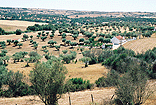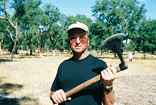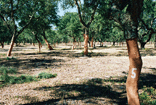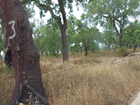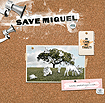
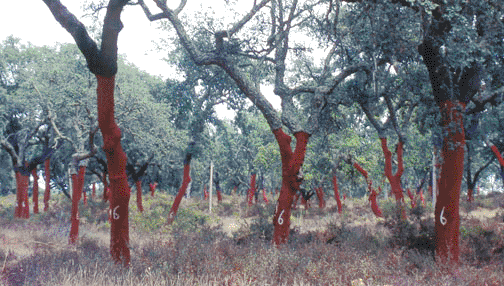
Cork
As A Sustainable Managed Resource
(Edited
from an original article by Bob Ecker in F&B International)
Natural
cork is an ancient, sustainable and ecologically friendly
forest product that has been supporting the people and
cultures of the Mediterranean Basin for thousands of
years.
Portugal,
at the far southwestern corner of Europe has been producing
wine for a long, long time. Vineyard planting really
took off after the Reconquista, which ended in 1249,
where the Portuguese and Spanish took back the lands
from the anti-alcohol Moors. The rise of wine and the
symbiotic Portuguese cork as an efficient bottle closure
has been of vital interest to the Portuguese economy,
as well as the International Wine industry today.
|
Click
on Image for caption and to enlarge |
Cork
has a long and colorful history indelibly linked to
wine. Pierre “Dom" Perignon, (born in 1638)
a Benedictine Monk at the Abbey of Hautville near Riems,
experimented with sparkling wines in the latter part
of the Seventeenth century. Though some were produced
before him, Dom Perignon's work produced a standard
and process for the production of Champagne, and also
established the use of cork stoppers as effective closures.
The entire cork industry owes a massive debt of gratitude
to that wonderful monk.
Contrary
to popular myth, cork trees are not cut down and can
be harvested every nine years throughout the nearly
200-year lifecycle of the tree. The white painted numbers
on the bark indicates what year the tree was harvested.
If you see the number 6 painted on the bark, that means
it was harvested in 06 and should not be harvested again
until 2015.
Cork
production employs over 60,000 people in the tiny country
of Portugal and another 40,000 elsewhere, with a significant
portion of the production coming from family operations.
The
worldwide production of natural cork wine stoppers is
nearly 13 billion annually. Amorim is responsible for
over 25% or 3 billion corks worldwide.
The total acres under cork production is over 6 million
(2.6 million hectares). Portugal accounts for approximately
70% of world production.
One
of the most important benefits of protecting our cork
forests is the forestsí ability to retain CO2
emissions by a staggering 10 million tons each year.
And every cork plays a role in ìcapturingî
and retaining nearly 9 grams of CO2 each. This remains
within the cork for its entire life. Recycling and reuse
just adds to the capture time and usefulness of the
cork.
How
Corks Are Made:
The cork is delivered to the factory and is stacked
in the open air on a drainable cement surface to prevent
contact with the earth. After 6 or more months of open
air seasoning, the cork is ready for sorting and boiling.
Then,
the pallets of cork are gently boiled for approximately
one hour to remove organic solids and bring the moisture
content to around 14%.
Next,
pieces are hand sorted. In fact, only about 30% of the
best wood ends up as a wine stopper. From here, pieces
of bark are then cut into smaller pieces, and sorted
by size, thickness and color. The pieces are sorted
and cut, sorted and cut, sorted and cut. Planks go to
different areas of the factory for varying types and
sizes of corks. At each stage, men and women are constantly
examining pieces of cork for all sorts of defects and
discarding rejects. Much of that wood is recycled, used
for flooring or is ground up and utilized as fuel for
the plant itself.
Natural
Corks are “punched," by skilled craftsmen
working leg-activated or semi-automated punches. Since
this is an entirely natural product, the men have to
look at each 15 inch piece of wood and move it slightly
left or right, up or down based upon the grain and unique
characteristics in the wood. Each piece of wood bark
yields about 9 corks.
After
the whole corks and disks are punched, they go through
an extensive sorting, washing and polishing process
that involves computerized photo sorting as well as
careful examination by teams of trained workers. Once
the cork have been graded and tested for TCA and other
contaminants, they are ready for custom printing and
coating. Amorim produces over 3 billion corks each year
making them the largest producer of natural wine cork
closures in the world.
To
meet a growing worldwide demand for high quality natural
cork wine closures, Amorim has invested over 12 million
Euros in modernization and quality control. The strategy
has paid off. Through the use of advanced (GCMS) chemical
analysis, patented quality assurance steps and strict
preventative protocols, the scourge of the cork industry,
TCA taint, has all but been eliminated from the companyís
products.
The
future for Amorim is bright. Given the companyís
financial strength and reputation as an innovator and
leader in the cork industry, it has taken on a new challenge
as a role model for sustainable business practices and
environmental stewardship. Amorim is the first cork
company in the world to offer FSC (Forest Stewardship
Council) Certified corks to the marketplace. The company
is also sponsoring cork recycling efforts in Australia
and the United States. Just like he trees it relies
on, green is the color of Amorim.






